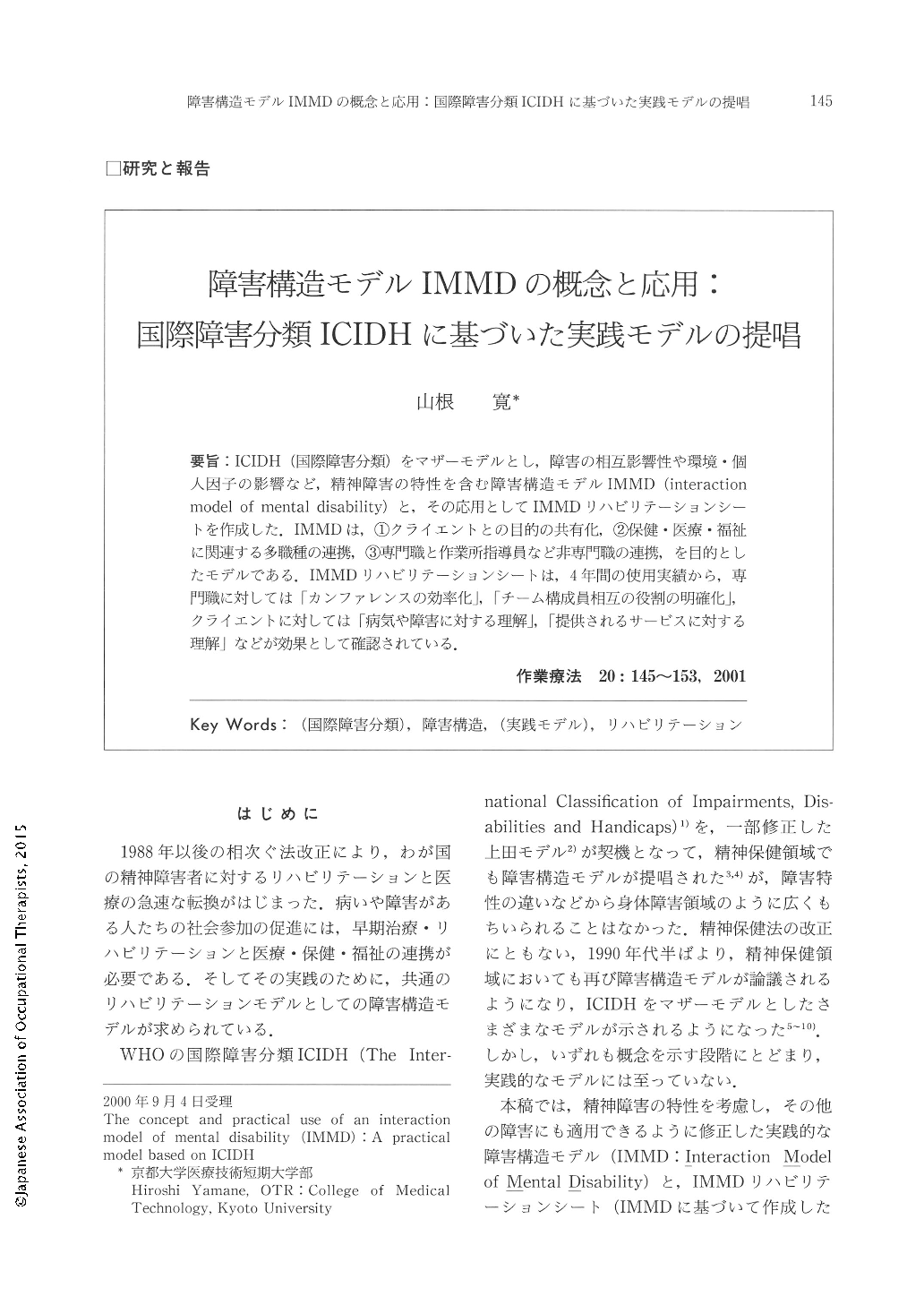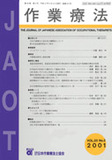Japanese
English
- 販売していません
- Abstract 文献概要
- 1ページ目 Look Inside
- 参考文献 Reference
- サイト内被引用 Cited by
要旨:ICIDH(国際障害分類)をマザーモデルとし,障害の相互影響性や環境・個人因子の影響など,精神障害の特性を含む障害構造モデルIMMD(interaction model of mental disability)と,その応用としてIMMDリハビリテーションシートを作成した.IMMDは,①クライエントとの目的の共有化,②保健・医療・福祉に関連する多職種の連携,③専門職と作業所指導員など非専門職の連携を目的としたモデルである.IMMDリハビリテーションシートは,4年間の使用実績から,専門職に対しては「カンファレンスの効率化」,「チーム構成員相互の役割の明確化」,クライエントに対しては「病気や障害に対する理解」,「提供されるサービスに対する理解」などが効果として確認されている.
I propose the "Interaction Model of Mental Disability (IMMD)and show the conference sheet and counseling sheet based on IMMD. Now, various models based on ICIDH are being proposed and tested around the world focusing on different aspects of disablement for each purpose. IMMD is one of the practical models based on ICIDH as "Mother Model". The remarkable point of IMMD is to simply visualize the mutual relation of mind and body condition including mental disablements (impairment, disability and handicap) and other contextual factors (environmental factors and personal factors). IMMD is one of the practical rehabilitation models and has a conference sheet designed for a conference among the professions and a counseling sheet designed for an interview and consultation with the user. IMMD has made possible the following cooperation: 1) cooperation between user and professionals ; 2) cooperative approach by various professions related with health medical treatment and welfare; 3) cooperation between professionals and non-professionals (e. g., family, friend, helper, partner, assistant, and so on). The conference sheet is used to obtain a consensus of a rehabilitation approach among various professions, and the counseling sheet is used to know the user's thoughts and hopes, to have the same goal with the user, and to aid the user in the reality orientation.

Copyright © 2001, Japanese Association of Occupational Therapists. All rights reserved.


